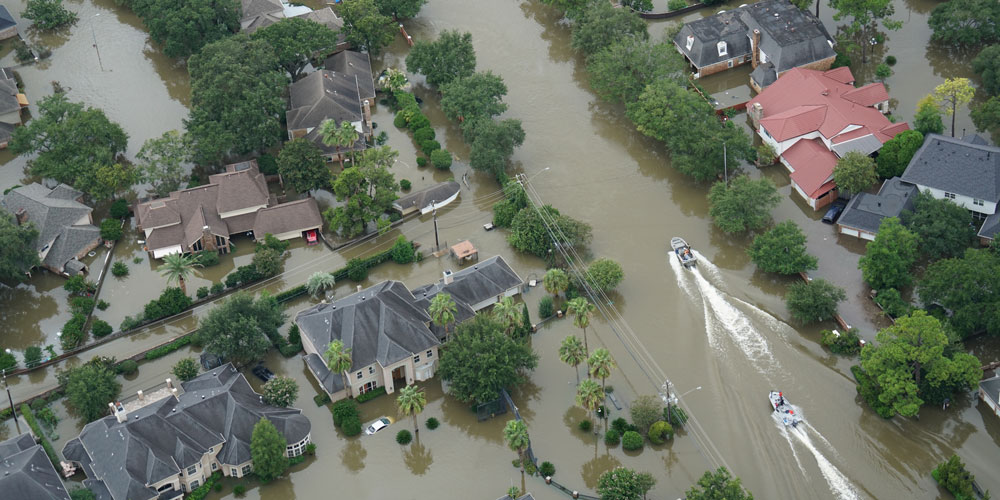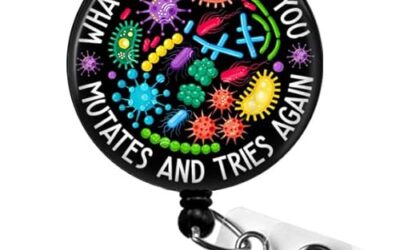Over the past few weeks, the United States has endured back-to-back Category 4 Atlantic hurricanes. Hurricane Harvey hit first in Texas on August 25th, followed just 16 days later by Hurricane Irma making landfall in the Florida Keys on September 10th. This marks the first time in 166 years of weather records that two Category 4 Atlantic hurricanes made landfall in the U.S. during the same year1, let alone within a two week span. Our hearts and thoughts are with those impacted by the devastation left in the wake of these catastrophic storms.
To make matters worse, venomous snakes and alligators are not the only dangerous creatures residents and rescue workers have to worry about in hurricane flood waters. Pathogenic microorganisms also pose a threat. For example, several pathogens that cause gastrointestinal illness may be present. Over 1,000 cases of diarrheal illness were reported by evacuees within three weeks of Hurricane Katrina’s landfall in New Orleans in 2005.2
Below are eight pathogens to be on alert for after flooding. Some pathogens are found in contaminated flood water, while others are spread in crowded shelters.
1. Escherichia coli
Although most E. coli strains are harmless, a few strains are pathogenic and can be transmitted through contaminated water. Shiga toxin-producing E. coli strains cause diarrhea or illness outside of the intestinal tract.
2. Shigella
Shigella can cause gastrointestinal illness in the form of diarrhea, vomiting, fever, stomach pain and dehydration. The bacteria can enter the water through polluted storm water runoff. Wells may be more vulnerable to such contamination after flooding, particularly if the wells have been submerged by floodwater for long periods of time.3
3. Vibrio vulnificus
Vibrio vulnificus can cause a skin infection when an open wound is exposed to brackish or salt water. It can cause serious illness especially among persons with medical conditions and can lead to limb amputation. About 1 in 7 people with a Vibrio vulnificus infection dies.4 Twenty-four cases of wound infections caused by Vibrio vulnificus or Vibrio parahaemolyticus were reported after Hurricane Katrina. Six deaths resulted.2
4. Noroviruses
Noroviruses are non-enveloped, single–stranded RNA viruses that can cause acute gastroenteritis. A person usually develops symptoms of gastroenteritis 12 to 48 hours after being exposed to this highly contagious virus. A person with a norovirus infection can shed billions of norovirus particles, and unfortunately, it only takes 18 viral particles to infect another person. It can be spread through contaminated water, from personal contact with an infected person, or from touching a contaminated object.5
5. Mycobacterium tuberculosis
After Hurricane Katrina, upper respiratory infections and pneumonia were reported among people in shelters, along with tuberculosis.2,6 Mycobacterium tuberculosis is spread through the air from one person to another. It is most likely to spread to people with whom the infected person spends time with every day.
6. Methicillin-resistant Staphylococcus aureus (MRSA)
MRSA can infect wounds that have occurred as a result of a hurricane or other catastrophe. Infection risk is increased when there is crowding, unsanitary conditions, or shared supplies such as towels. In September 2005, the CDC reported 30 pediatric and adult cases of MRSA among a group of Hurricane Katrina evacuees at a Dallas, TX facility.2,6
7. West Nile Virus and St. Louis encephalitis virus (SLEV)
West Nile Virus and St. Louis encephalitis virus (SLEV) are spread by mosquitoes. The mosquito population may decline immediately after a hurricane because winds and floods wash away containers that have been breeding sites for the vector. After the floodwaters recede, however, the mosquitoes rebound in old tires and low areas. A year after Katrina, cases of encephalitis and meningitis caused by West Nile disease more than doubled in the affected regions of Louisiana and Mississippi. Researchers from Tulane University’s School of Public Health and Tropical Medicine believe this might be because people were spending more time outside waiting for rescue and rebuilding homes.6
8. Mold
Molds can be a big problem. Two months after Hurricane Katrina, CDC investigators found mold in the walls of half of the 112 water-damaged homes.7 People who are allergic to mold may have difficulty in breathing and shortness of breath. People with weakened immune systems and with chronic lung diseases, such as obstructive lung disease, may develop mold infections in their lungs.8 It was implicated in the deaths of four professors at Southern University at New Orleans. All four had worked in the same storm-damaged building.6 Guidelines issued by the World Health Organization note that living or working amid mold is associated with respiratory symptoms, allergies, asthma, and immunological reactions. The document cites a wide array of “inflammatory and toxic responses after exposure to microorganisms isolated from damp buildings, including their spores, metabolites, and components,” as well as evidence that mold exposure can increase risks of rare conditions like hypersensitivity pneumonitis, allergic alveolitis, and chronic sinusitis.10,11
Safety Tips
A few of the precautions CDC recommends taking to protect oneself after a hurricane or flood are:
- Keep your hands clean. If your tap water is not safe to use, wash your hands with soap and water that has been boiled or disinfected. If soap and water are not available, use an alcohol-based hand sanitizer that contains at least 60% alcohol.12
- If you plan to be inside the building for a while or you plan to clean up mold, you should buy an N95 mask at your local home supply store and wear it while in the building.9
- Keeping wounds clean and covered is crucial during an emergency. If you have open cuts or sores, keep them as clean as possible by washing well with soap and clean, safe water to control infection. If a wound develops redness, swelling, or drainage, seek immediate medical attention.12
References
- The Weather Channel. Hurricanes Irma and Harvey Mark the First Time Two Atlantic Category 4 U.S. Landfalls Have Occurred in the Same Year. September 10, 2017. https://weather.com/storms/hurricane/news/hurricane-irma-harvey-landfall-category-4-united-states-history
- CDC MMWR. Infectious Disease and Dermatologic Conditions in Evacuees and Rescue Workers After Hurricane Katrina — Multiple States, August–September, 2005. September 26, 2005. https://www.cdc.gov/mmwr/preview/mmwrhtml/mm5438a6.htm
- CDC Drinking Water. https://www.cdc.gov/healthywater/drinking/private/wells/disease/shigella.html
- CDC Vibrio vulnificus Infections and Disasters. https://www.cdc.gov/disasters/vibriovulnificus.html
- Norovirus: Clinical Overview. https://www.cdc.gov/norovirus/hcp/clinical-overview.html
- The Washington Post. The health dangers from Hurricane Harvey’s floods and Houston’s chemical plants. September 1, 2017 https://www.washingtonpost.com/news/to-your-health/wp/2017/08/29/the-health-consequences-to-expect-from-hurricane-harveys-floods/?utm_term=.cba4591800fb
- CDC MMWR. Health Concerns Associated with Mold in Water-Damaged Homes After Hurricanes Katrina and Rita — New Orleans Area, Louisiana, October 2005. https://www.cdc.gov/mmwr/preview/mmwrhtml/mm5502a6.htm
- The New York Times. Short Answers to Hard Questions About Health Threats from Hurricane Harvey. August 31, 2017. https://www.nytimes.com/2017/08/31/health/hurricane-harvey-health.html?mcubz=0
- Mold After a Disaster. https://www.cdc.gov/disasters/mold/
- World Health Organization (WHO). WHO guidelines for indoor air quality: dampness and mould. 2009. http://www.who.int/indoorair/publications/7989289041683/en/
- Hamblin, J. The Looming Consequences of Breathing Mold. The Atlantic. August 31, 2017 https://www.theatlantic.com/health/archive/2017/08/mold-city/538224/
- Personal Hygiene and Handwashing After a Disaster or Emergency. https://www.cdc.gov/disasters/floods/sanitation.html






It is horrible that not only have people lost loved ones, homes, and basically their way of lives, but they have to deal with these situations also. Out of all of the 8 problems listed which would you believe to be the most dangerous? Also when there is so many in shelters, how are the health risks of these pathogens explained to the public?
Wonderful review of these common microbes that are always around. These disasters give the way to do what they are very good at that is inhabiting an environment where they can thrive. One should understand it is the wealth poured into healthcare keeps these pathogens at bay. They are all at our borders and we keep them away through inoculations vaccines and drugs. Good clean water, a good sewage system and education will go a long way to protect our citizens home and abroad. Darryl Gopaul MBA, PhD – RETIRED MEDICAL MICROBIOLOGIST
Well said!